The Visit of Auckland Aero Club's Moths
and the establishment of
Cambridge's Airfield
Three de Havilland DH60 Gipsy Moths visited Cambridge in October 1929 from the Auckland Aero Club. The aircraft and their crews were making a tour of the North Island to survey and encourage the establishment of aircraft landing grounds throughout the country.
The Aero Club proposed the setting up of such a landing ground right here in Cambridge, at the Trotting Club (also known then as the Showgrounds, and now Cambridge Raceway).
Waikato Independent, Thursday 12th of September 1929CHAMBER OF COMMERCE
ORDINARY MEETING
AEROPLANE LANDING GROUNDS
Prior to the discussion on railway freights and the transport service to Cambridge last evening at the Power Board buildings, an ordinary meeting of the Chamber of Commerce was held, the president (Mr T.F. Richards) presiding over a very good attendance of members.
Aeroplane Landing Grounds
The Secretary, Auckland Aero Club, wrote re the provision of landing grounds for aeroplanes throughout the Dominion. The securing of such areas was one of the main obstacles to aviation progress in the Dominion. It was felt that the obtaining of data from borough councils and other local bodies was unwieldy, and with a view to awakening interest in the various centres, it had been decided to give practical demonstrations. The club had decided to send a flight of two or more 'planes round the North Island for the purpose of discussing landing grounds and would arrive in Cambridge on October 3 at 12.30, and leave again at 3 p.m. It was suggested that the chamber arrange for a conference of persons interested; also that the school children be invited to be present.
The president said he had no doubt the matter would be placed before the Borough Council, but he thought the chamber would be interested. He understood the Trotting Club was interested itself in the matter of providing a landing ground at the racecourse.
On the motion of Messrs A.H. Nicholl and A.E. Hill it was resolved that the secretary bring the letter before the notice of the Trotting Club and ascertain what steps they have already taken in the matter, and what revenue was likely to be derived from the landing area when laid down.
It was agreed the club's request for a conference of interested residents be arranged.
Waikato Independent, 21st of September 1929
Seeking Landing Grounds.
The Auckland Aero Club wrote re the provision of landing grounds throughout the Dominion, and advised that so as to encourage the movement the club intended sending two planes to Cambridge on October 2. The club requested a conference of local body representatives and also extended an invitation to anyone to inspect the machines.Cr Care said that he observed the Trotting Club was taking action in this direction. The matter was left in the hands of the Mayor, Cr Care and the clerk to get in touch with the Trotting Club; also to advise the Aero Club that the council appreciated the visit and would be pleased to meet its representatives and discuss the matter.
The Mayor said he had been assured by the pilots who were recently in Cambridge that there was an area of land on the north side of the Karapiro Road that would make the finest landing grounds and site for an aerodrome in Australasia.
The Mayor predicted that in ten years planes would be regularly bringing passengers to Cambridge.
Waikato Independent, 3rd of October 1929AERIAL TOUR
PLANES VISIT CAMBRIDGE
A MEMORABLE OCCASION
In a continuation of their tour of the first section of the North Island for the purpose of arranging landing grounds, the three Moth aeroplanes arrived at "Bardowie" Cambridge, punctually at 11.30 this morning, and made a perfect landing before a large and representative gathering.
The planes left Te Aroha at 9.30 this morning and visited Morrinsville. Leaving there at 11.15, the three planes, flying in triangular formation, were first observed as mere specks on a cloudy north-eastern sky. Soon they took more definite shape, and after circling over "Bardowie", made a beautiful landing in what is known as the 'pond' paddock.
The first plane glided slowly and gracefully down before the spectators. It was the Auckland Aero Club's plane (gift of the Auckland Herald), piloted by Captain J. Seabrook (club captain), with whom was Mr K. Hackett (Herald representative). This was followed closely by the other two machines. The club's D.H. Moth was second, with Major J. Cowper (instructor of the club) and Mr H. Mason (a member of the committee). The last to land was Mr J.C. Horton in his private Moth. He was accompanied by Mr E.W. Wright, a pupil of the club.
Mayor's Welcome
In extending a very hearty welcome to the visiting airmen, Mr C.H. Priestly (Mayor of Cambridge) said that flying had now come to stay. He advised the visitors that the Cambridge Trotting Club was prepared to put down a landing ground on the racecourse. He assured them that there were a number of public-spirited men in the district who were keenly interested in aviation.
They looked upon the present visit, said the Mayor, as a red-letter one for Cambridge. He assured the club that Cambridge was prepared to do at all possible to advance aviation in the district.
Mr R. Hannon (president of the Trotting Club) also briefly welcomed the visitors.
Mr Mason, president of the Auckland Aviation Association, thanked the speakers and those present for the welcome. The object of the visit was to stimulate interest in aviation . They made a strong point that it did not entail a great expense on local bodies to provide landing places, especially in country districts. All that was required was a good area of level ground with Clear approaches. Mr Mason stated that they had started out from Auckland, and the trip to Te Aroha had taken one hour. This showed the value of aviation for general transport. Another object was to demonstrate to the people how safe flying was.
Mr Marshall, the Mayor of Paeroa, who had flown from Auckland, had declared the experience as sitting in an armchair. The speaker said if landing grounds were provided all over the country in two years flying would be general in New Zealand. He also reminded those present that the provision of grounds for landing would not affect the production of the land in question.
Local Flights
After the reception a number of officials of the trotting Club and other public personages were taken for flights, some interesting "stunts" being indulged in. Afterwards the visitors were taken on a tour of inspection of the trotting Club's racecourse.
Next Stage
The visiting planes are to leave Cambridge at 3.30p.m. for Te Awamutu on the next stage of their tour.
The Auckland Weekly News
This event was also covered by the now defunct Auckland Weekly News, and in the issue dated the 9th of October 1929 a full page photospread of the Moths in Cambridge was featured, as seen below. Note: These images are digital photos taken of the microfilm reader screen, as the old magazines are held on microfilm at the University of Waikato, so the quality is not as good as a scan from the real thing. The photos were taken by J.F. Louden

Better details from that page with the original captions in grey, and more detail from me where appropriate in yellow, are thus:
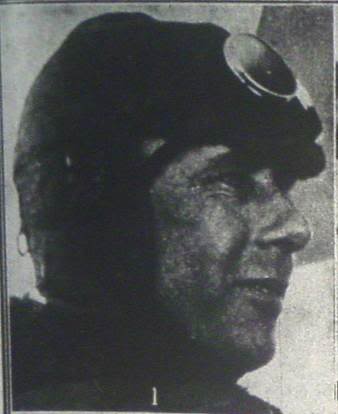
1. Captain J. Seabrook, one of the pilots on both stages of the tour
This was Captain John Seabrook, an ex-WWI pilot, still in the Territorial Air Force then, and the Chief Flying Instructor with the Auckland Aero Club at this time

2. Captain W.S.R. Bloomfield, a pilot on the second stage
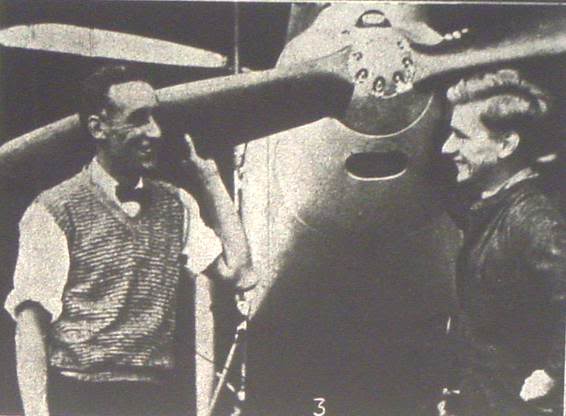
3. Major G.A.C. Cowper, also a pilot on both stages, talking with assistant ground engineer at Mangere, Mr L. Anderson (right)
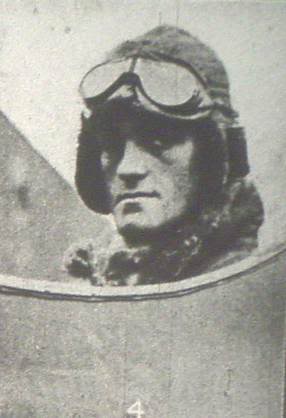
4. Mr Ian Horton, who flew his own machine on both stages
This is Mr Horton of Wilson and Horton newspapers, who own the New Zealand Herald and also owned the Auckland Weekly News where these photos come from. The company donated a Moth to the Auckland Aero Club, becoming known as the Herald Moth
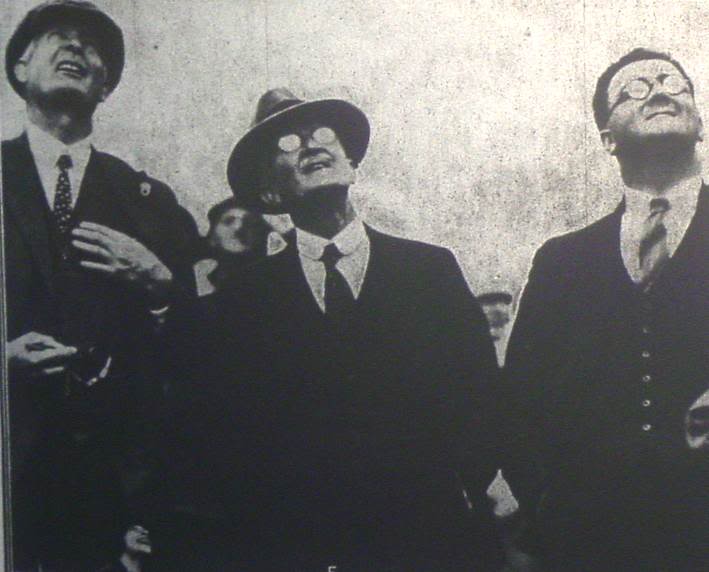
5. Cambridge residents including Mr. R. Hannon (left), president of the Cambridge Trotting Club, watching the aeroplanes arrive
6. Machines over Cambridge with the War Memorial on right
The three Auckland Aero Club DH Moths are seen flying up Victoria Street in a low flypast. Clearly seen is the Cenotaph on the right, the National Hotel on the left and in the background the old Post Office which in 1929 still had it's clock tower.
7. School girls with a keen "air sense"

8. Aero Club "Moths" surrounded by interested spectators at Te Aroha

9. In sympathy with the aviator. A well known Cambridge lady "helps" Major Cowper while watching him do a loop
Does anyone have any idea who this lady was?

10. Flyers and prominent residents photographed in front of one of the machines at Cambridge.
Do you recognise anyone in this photo? If you do, please contact me
Here are some blow ups which may help you to recognise faces:

Waikato Independent, Saturday 5th of October 1929 AVIATION GROUNDS PROVISION IN CAMBRIDGE SUITABILITY OF RACECOURCE
|
|---|
To clarify, this push to create a permanent aerodrome started in 1929, and would have been to make a permanent landing ground of an existing airfield that was occasionally used by aircraft visiting Cambridge.
It gets complex because most references to the airfield placed it on the Bardowie Estate, owned by wealthy landowner James Taylor on Victoria Road. Opinion is actually divided among the people who remembered aviation in those days in the area as to whether aircraft were flying from paddocks on the east or the west side of Victoria Road, as James Taylor owned both sides; though several people reckoned it was Taylor's "Pond Paddock" which was on the west side.
Bardowie Estate encroached into boundaries of the Cambridge race track, as the track was too large to fit the Greenbely and spilled onto Taylor's land.
It is assumed, but have not confirmed, that the piece of land was leased to the Trotting Club by Taylor. Half the track lay in the greenbelt land, which is council owned (i.e. public owned). The other half of the mile long track went into private land, that of Mr Taylor.
This area, on the corner of Taylor Street and Victoria Road had also been used for polo by the Cambridge Polo Club. So this is why some reports of aircraft in the Polo Ground were made in the newspapers.
It has to be remembered that Cambridge's trotting track used to be quite a lot larger than it is today. In fact around twice the size. The track extended all the way out across the Greenbelt area of Taylor Street, and out to virtually touch Victoria Road. So most of the Greenbelt we now see on Taylor-Victoria corner, and all of the track today, was all on the inside of the old track! A massive area.
1940's and 1950's aerial photos of the area clear up the mystery of the Pond Paddock on Bardowie Estate. Where the pond is nowadays next to the current day pony club, there were in 1946 tall trees even then, which seem to surround the same pond. That pond would definitely have been on the edge of the Taylor property, Bardowie, where it borders with the greenbelt. See the diagram below to clarify this.
All the area around those trees in the 1940's and 50's photos was flat grass land, so must have been back in the 1930's too. There were no fences dividing the border between Taylor's property and the council-owned greenbelt either, so it seems the greenbelt land was probably leased by Bardowie for grazing.
With no fences, the area in the middle of the track is more than enough to land even a large aircraft like a Fokker Trimotor on comfortably, and smaller Moths, Avians, Spartans and Desoutters wouldn't have any trouble. Many of the unconfirmed reports of the Southern Cross landing in Cambridge say it was in this area, and having seen the photos I now believe it possible.
There were no power lines or other obstructions either except the tall oaks down Taylor Street, but they would be on the opposite side from where aircraft would operate and cause no problems.
That pond has probably always been there, under those trees, and I am quite convinced that the Pond Paddock, and the Racecourse were one and the same place. Now that we have also pinpointed the Polo Ground as being in the very same paddock, thanks to John Richardson who told me this, we know now all these places were the same big field.
If you have any further memories, photos, documentation or better still, photos, of the airfield at Cambridge, I'd be very pleased to hear from you. Email me
So from 1919 onwards there was aerial activity from the Bardowie airfield, Taylor's private piece of land simply cleared of fences so aircraft could operate as and when they needed. It was used for special events, joy rides and parachute displays as such. But it wasn't till 1929 that a proper Aero Club-backed and Council-sponsored aerodrome was proposed for Cambridge.
However, by July 1930 in his annual report to members, President of the Cambridge Trotting Club, Richard Hannon, stated that the club committee had decided against turning the race course into an aerodrome for the Aero Club. But that was certainly not the end of it as many aviators continued to use that piece of land as an airfield through the 1930's, as detailed below.
Who Used The Cambridge airfield?
So, we now have established that the land on the corner of Taylor Street and Victoria Road became an airfield, though not a permanent aerodrome. But who used it? Some interesting characters all told...
This airfield on Taylor's land was where the first aircraft to visit Cambridge had landed, the Avro 504 detailed on this page.
The Bardowie strip was also the site of aircraft rides provided by George Bolt in an Avro Avian. See here for more.
The famous Fokker Trimotor Southern Cross of Kingsford Smith fame also landed on this field in 1934. See more here
Among the operators to have used Cambridge Airfield was the famous Malcolm "Mac" McGregor, who had become the chief pilot of the short-lived Hamilton Airways Ltd. This was set up by a group of Waikato businessmen in April 1929, originally with Mr John H.M. Smith as the company's first pilot. The airline started small with DH60 Gipsy Moth ZK-AAG, which they'd bought from Mill's Air Survey and Transport Company. Later two more Gypsy Moths were added to the company, ZK-AAS and ZK-AAV. It seems the company was an aerial taxi service, people could telephone them and charter a flight from and to anywhere. They flew to almost any town or district in the country, and if they didn't have an aerodrome they'd land in the most suitable paddock to be found.
Mac McGregor is reported to have flown into Cambridge on a number of occasions to pick up or let off a passenger. It was fairly commonplace for the more wealthy passenger to go by aircraft to Hamilton (landing at the racecourse at Claudelands) than by road, because the road to Hamilton up till 1939 was unsealed and in appalling condition. The alternatives were travelling by riverboat or by train, both of which were the more affordable transport options. But going by air was more fun, more exciting and quicker for those who could afford the luxury.
Another pilot known to have operated from Cambridge Airfield was Stanley Blackmore. He flew with the Waikato Aeroclub and his own Waikato Aviation Co. Ltd (the latter based in Rotorua) so apparently made regular visits to Cambridge in Desoutter Tourer aircraft, which could carry two passengers as well as Stan. He would take rides at the annual A&P shows and other events (local airman Charlie Christiansen remembers going up with Blackmore on one such trip). Blackmore also used the other nearby strip on Bardowie, Victoria Road too, on one such occasion being when he took up parachutist Scotty Fraser.
On March the 2nd, 1933, another very famous and important New Zealand pilot flew into Cambridge. He was Ron Kirkup, flying his Avro Avian ZK-ACM. He'd flown down from Mangere to Orakei and then Cambridge, before flying onto Te Rapa, Te Awamutu and Rukuhia.
That was ZK-ACM's first visit to the town but not its last, because In April 1934 Kirkup sold the Avian onto Ted Harvie, who had local Cambridge connections. Harvie was then based at Mangere but he flew charters around the country, and on the 15th of May 1934, he flew A.P. Blair from Mangere to Cambridge via Te Rapa, and back.
On the 24th of May 1934, Ted again flew down to Cambridge from Mangere, by himself, and returned to his Auckland base with J. Sawers aboard - perhaps a businessman going to the big smoke?
On the 7th of June 1934 Ted Harvie flew into Cambridge alone from Taupo in ZK-ACM. He then tripped onwards to Mangere the same day. No doubt he met friends and family during this stopover. The next day he flew back to Cambridge, via a short stop at Te Rapa, and he returned to Mangere with a passenger this time, a M. Harvie. This was probably his brother Monty.
On the 25th of June 1934, after taking future Air Force squadron commander Aubrey Breckon for a flight over Auckland Harbour, Ted then flew A. McGruen down from Mangere to Cambridge before proceeding onwards to Rukuhia, Te rapa and home to Mangere.
On the 2nd of July 1934, Ted again flew to Cambridge, leaving from Hobsonville this time and flying passenger K. Bartlett into the town. They returned to Mangere that day.
The Avian went through a complete overhaul shortly afterwards, and then on the 13th of September 1934 Ted flew E. White from Mangere to Cambridge, and onto Te Rapa.
On the 20th of September another trip south saw Ted fly to Te Rapa, then he flew from there to Cambridge and back twice, before returning to Cambridge. The aircraft seems to have stopped at Cambridge at this point, his logbook states "at Cambridge". He flies it on the 3rd and 4th of October just at Cambridge, and finally leaves the town on the 4th back to Te Rapa and onto Mangere.
I am certain that this period where Ted had his plane based at Cambridge, for the 14 days between the 20th of September and 4th of October 1934, this was when a young lad by the name of Gordon Easter became involved. Gordon recalled to me how he washed and polished Ted's aeroplane and how eventually Ted took him flying in it and taught him the basics of how to fly. This all makes perfect sense because there was some local flying in the logbook, and even more importantly, there's a notation in the book for this period stating "A/c washed, cleaned, greased, inspected." A/c being shorthand for aircraft.
Avian ACM graced Cambridge skies again on the 12th of November 1934 when Ted flew her in from Mangere direct, flying solo, and tootled onwards to Te Rapa and back to Mangere the same day.
This trip was Ted's last jaunt into the Cambridge Airfield in his Avian, though he continued to fly all around New Zealand in the plane till he sold it onto Mr. R.G. Tappenden in April 1935.
A huge thank you goes to Mr Keith Trillo, ZK-ACM's last owner, for kindly supplying the above details from the aircraft's logbook.
If you recall anyone else or any aircraft types using the Cambridge Airfield I'd like to hear from you please.
Now I have to establish when the aerodrome ceased to operate as such. I'm not sure if it continued in use right up till the war, when the Army took it over and the racecourse became a training facility for Territorials. Does anyone know when it ceased as an operational airfield?
I have attempted to construct a diagram to demonstrate basically where the two airfields lay. Note, this map is by no means to scale. If anyone can add more information or correct anything wrong here, please contact me

And here are some photos of the airfield site in 2006 (it has changed little since then)
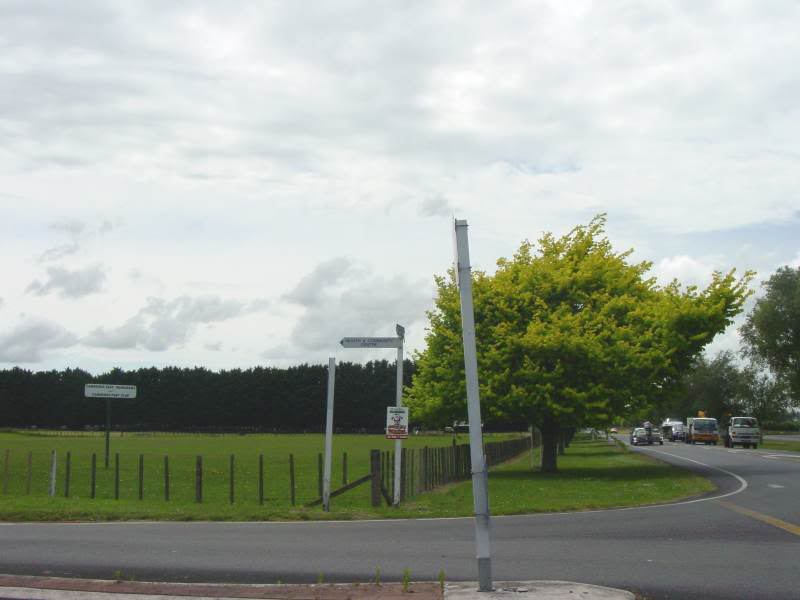
Above: This is the corner of Taylor Street (running to left and right of shot, and Victoria Road looking towards Hautapu direction. This fence around the piece of greenbelt land was basically the edge of the trotting track as it used to be (it was obviously oval within the confines of the fence line I mean)

Looking slightly left of the previous shot gives an idea of the field, and the size of the trees in Taylor Street, which are very ancient and would not have been much smaller in 1929-1930's

The view from Taylor Street fence line across to the pond, which is under the tallest trees seen. In the 1930's those tall trees were almost in the centre of the track, with as much pasture again on the other side of them. They were an isolated clump in those days without the fences and smaller trees around them.

And for reference, a shot of the pond itself.



